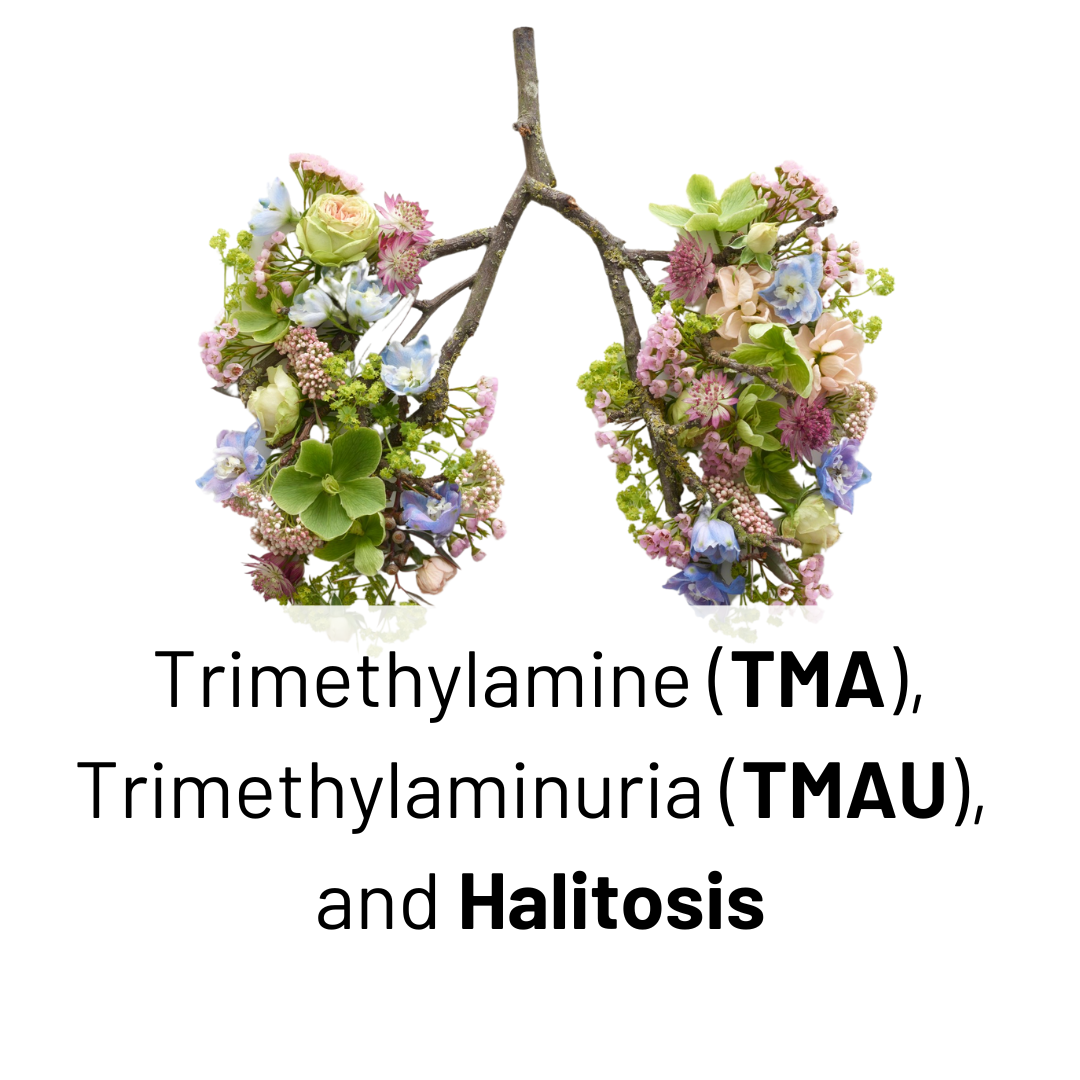Trimethylamine (TMA), trimethylaminuria (TMAU) & extra-oral halitosis
Trimethylamine (TMA) is a compound that plays a significant role in extra-oral halitosis, particularly in the condition known as trimethylaminuria (TMAU).
Here’s a more detailed look at TMA and its impact on extra-oral halitosis.
What is Trimethylamine (TMA)?
Trimethylamine is an organic compound that has a strong, fishy odour. It is produced in the body through the digestion of certain nutrients, particularly choline and carnitine, which are found in foods like eggs, liver, fish and legumes.
Gut bacteria play a key role in the conversion of these nutrients into TMA.
Metabolism of TMA
In a healthy person, TMA is metabolised or converted in the liver by the enzyme flavin-containing monooxygenase 3 (FMO3) into an odourless compound called trimethylamine N-oxide (TMAO).
This conversion prevents the accumulation of TMA in the body and its release through bodily fluids.
Trimethylaminuria (TMAU)
Trimethylaminuria, also known as fish odour syndrome (awful name), is a genetic disorder caused by mutations in the FMO3 gene.
These mutations result in a deficient or non-functional FMO3 enzyme, leading to impaired conversion of TMA into TMAO. As a result, TMA accumulates in the body and is excreted in urine, sweat, breath, and other bodily fluids, causing a strong odour.
But epigenetics are often involved, where genes may have been triggered to behave badly. Genetics aren’t necessarily our destiny, and can often be ‘switched off’.
The causes of TMA Accumulation
Genetic Mutations – Inherited mutations in the FMO3 gene reduce or eliminate the enzyme’s activity
Dietary Factors – A high intake of TMA precursors like choline and carnitine can exacerbate symptoms in people with TMAU
Research on the role of betaine in TMA production is limited. Some studies indicate that betaine can be converted to TMA by gut bacteria, but this is not considered the primary pathway for TMA generation
Hormonal Changes – Hormonal fluctuations, such as those occurring during menstruation, pregnancy, menopause, chronic stress and with metabolic disorders, can influence TMA production and exacerbate symptoms
Stress – Stress can affect the body’s metabolic processes, potentially increasing TMA levels
Symptoms of TMA-Related Halitosis
The main symptom of TMA-related extra-oral halitosis is a persistent fishy odour coming from the breath and other bodily secretions like sweat. This odour can vary in intensity and is often resistant to conventional oral hygiene measures.
assessment of tmau
Determining whether someone has TMAU may include
Assessment – Evaluating the symptoms and taking detailed patient history
Biochemical Testing – Urine testing to measure levels of TMA and TMAO
An elevated TMA to TMAO ratio suggests TMAU
Genetic Testing – Identifying of mutations in the FMO3 gene can confirm a predisposition towards TMAU
Management of tmau
Several strategies can help manage and reduce the symptoms of TMAU
Modifying the diet
Reducing the intake of foods high in choline and carnitine
Avoiding fish, eggs, liver, legumes and some vegetables like beans, soy and its products
Taking supplements
Activated charcoal and copper chlorophyllin can bind TMA in the gut and reduce its absorption, thus lowering its levels in the body
Vigilant hygiene
Practicing good oral and bodily hygiene, which many TMAU sufferers are already vigilant about
Gut bacteria composition
Reducing TMA-producing bacteria in the gut microbiome can also help
Conclusion
Trimethylamine (TMA) is a key factor in extra-oral halitosis, particularly in people with trimethylaminuria (TMAU).
The inability to metabolise TMA due to defective FMO3 enzyme activity leads to the accumulation of this odorous compound in the body, causing halitosis.
Understanding the role of TMA and adopting appropriate management strategies can help mitigate the symptoms and improve the quality of life for those affected by TMAU.

